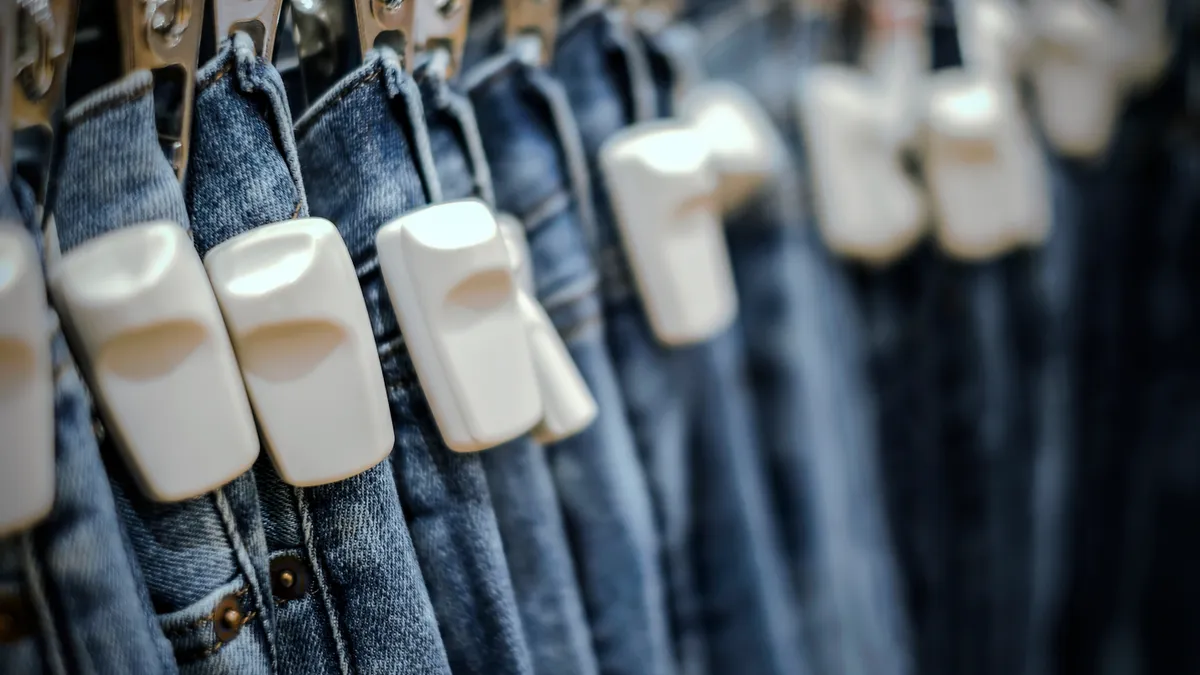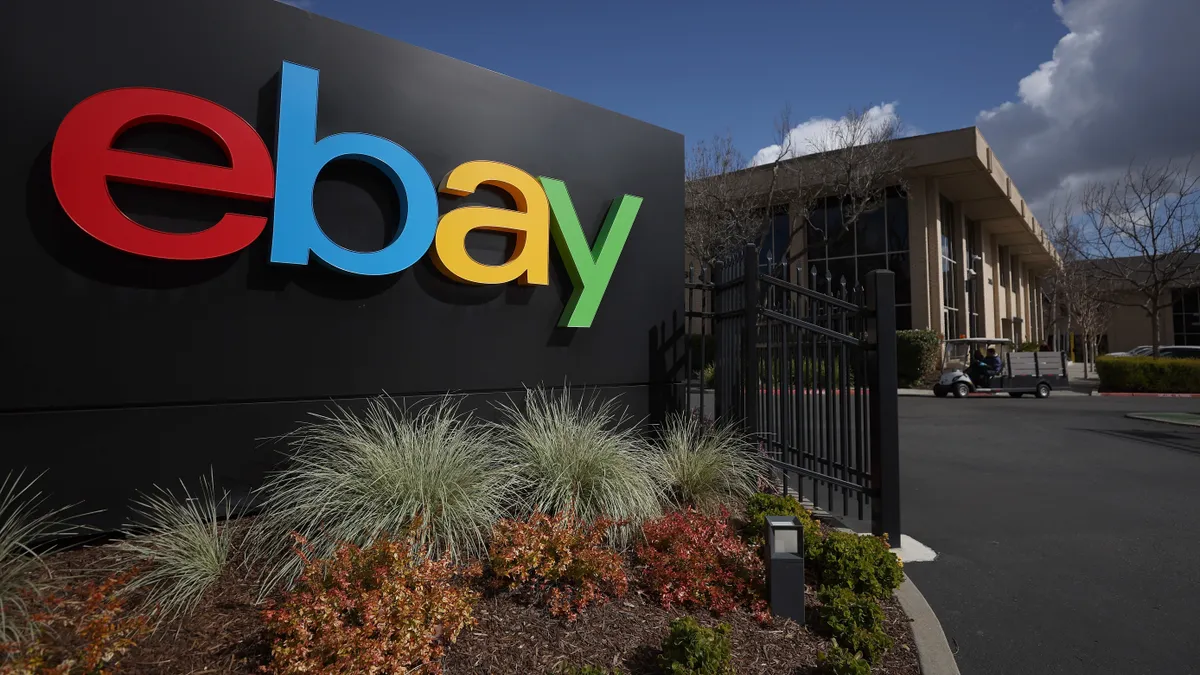An increasing number of retailers are dusting off a decades-old technology in order to streamline their inventory management, and some experts believe it could go far in tightening up the industry’s loose accounting of shrink and theft.
Radio-Frequency Identification (RFID) tech evolved from work in radar around World War II, and has had many applications since, according to the Institute of Electrical and Electronics Engineers. It employs various radio frequencies to transmit information between a stationary location and an object or between objects, including moving objects.
This makes it handy in inventory management throughout the supply chain, which is why it’s been employed by retailers for at least 20 years. The tech uses electromagnetic fields to wirelessly transmit data between a reader and a tag affixed to an item.
Despite its already routine and expanding use — 61% of retailers plan to be using it by 2026, according to Zebra Technologies’ latest global research — it remains underutilized, experts say. Yet, RFID could be instrumental in solving shrink and theft issues that are confounding the industry. More than 60% of shrink is due to reasons within a retailer’s own operations, and RFID tech allows retailers and brands to glean and integrate information about where an item is or where it went, when it was sold and at what price, whether it was lost, and more.
“If we look at retailers today, they often have good intelligence on what's leaving the warehouse and what goes through point of sale,” Brad Bogolea, co-founder and CEO of Simbe, which leverages RFID, computer vision and AI to fuse various data points. “But there's a lack of visibility around whether products are actually stocked — are they in the right place, do they have the right price. With the fusion of data points, we can illuminate when there’s an issue — whether it’s stocked, lost, damaged, stolen or misplaced.”
Inventory management
The most obvious use of RFID tags may be to track inventory.
At Macy’s, which has employed RFID in some capacity for nearly 14 years, inventory counts that once could be taken only once a year have been drastically compressed and can be done more often, according to Joe Coll, Macy’s vice president of asset protection operations and strategy.
“If it's seasonal goods, you can nail it down to three or four months when you would have had that product inside of your building,” he said, speaking to a National Retail Federation audience last month. “But when you start to get RFID penetration on your product inside of your buildings, and you start to introduce monthly cycle counts, you now take a 12-month window of great unknowns and compress that down to 30 days.”
Bill Hardgrave, who founded the RFID Lab at the University of Memphis, where he is now president, said that the lab’s research shows that the traditional annual inventory snapshot breaks down almost immediately, leaving the same cloudy picture from before the count began.
"We’re getting to a point where, if you sell it, we can tag it."

Marshall Kay
Global Director of Retail Transformation Services at Avery Dennison.
“One of the biggest factors in the deterioration of inventory accuracy is shrink, the loss of that product as it goes along the supply chain, from a variety of reasons,” he said, also speaking at NRF’s Big Show conference. “We would track the deterioration and as few as six weeks after taking that annual inventory, it had deteriorated back to its previous level, much of that due to shrink.”
The accuracy afforded by RFID-enabled counts also helps avoid “frozen out of stocks,” where merchandise fails to be replenished because the retailer thinks it has more than it really does, Hardgrave said. Coll said that at Macy’s RFID tech updates buyers daily.
“We're leveraging the shrink visibility to get merchandise visibility, and to get back in stock the product the customer wants,” he said.
Tagging everything, everywhere
One reason many retailers miss out on the full potential of RFID is the belief that only certain types of merchandise, or only expensive products, benefit from being tagged, according to Marshall Kay, global director of retail transformation services at Avery Dennison.
“There's been a misperception that RFID perhaps is most relevant for soft goods like apparel and towels, linens, things of that nature,” he said, speaking at the NRF conference. “Today we're tagging so many other goods. We're getting to a point where, if you sell it, we can tag it. Things with liquids and metals, fragrances, lipsticks — you can tag a frying pan. So from that perspective this is more relevant to you than you probably think.”
Despite its familiarity with the tech, Macy’s has only recently realized a range of benefits from RFID beyond inventory counts, according to Macy’s Coll. In addition to tagging a range of merchandise, the department store has expanded RFID to cover more entrances; Coll calls these “smart exits.”
The company realized that merchandise on the first floor might be taken out the door from an exit on another level, and began tagging all entrances, which at Macy’s stores can be as many as 10. This way, the retailer is now able to spot "those individuals that are causing the biggest distortion and biggest loss events inside of our stores," Coll said.
“You’re getting video timestamps of every individual that took product out of your building without paying for it,” he said.
To the retailer’s consternation, that included many longtime employees who had gained its trust over the years, including one who had worked at Macy’s for more than six decades. Theft by employees accounts for about a third of all shrink, and the NRF considers it “just as concerning for retailers as other forms of theft,” according to its latest shrink report.
“I like to think they were not stealing for 62 years,” Coll said. “But they were stealing from us, and they had been working for us for 62 years.”
Loss prevention, or at least detection
Expanding the use of RFID technology could provide the retail industry with sorely needed data around shrink and theft.
Viral videos of alarming, sometimes violent smash-and-grab incidents at stores have captured the public’s attention, but have done little to shed light on the scale of the problem, leaving law makers and law enforcement scratching their heads. Last year the NRF retracted its key statistic on organized retail crime. Policy makers in Congress and elsewhere have called on the industry to improve its data on the issue.
It has become “very, very clear that, in order for this to fully get on the radar of the political element ... and prosecutors, there needs to be more data,” Kay said. “There needs to be the ability to connect dots that in the past haven't been connectable, and it's very encouraging to see that great progress is being made on that front.”
Hardgrave noted that even now, RFID’s strength lies more in loss detection than prevention. But widespread use of RFID, which was identified by the lab as useful in loss prevention two decades ago, could provide a more thorough picture that could finally enable true loss prevention, he said, speaking to the NRF audience. That includes fraudulent returns, which the NRF pegs at 13.7% of last year’s $743 billion in returns, which extrapolates to $101 billion.
“Especially for chain stores — they steal from one store and they return it to another store,” Hardgrave said. “With RFID, you capture that when you’ve got full visibility through point of sale.”
In searches for stolen merchandise from Macy’s at venues like flea markets, Coll has also found goods taken from other retailers, including Dick’s Sporting Goods, thanks to information on the RFID tags. And the data can show law enforcement an item’s trail.
“If we can only prove the movement of stolen property across state lines, then the FBI would be all in,” he said. “When you have RFID, not only can I prove that the product was stolen out of Chicago and moved to Queens in New York, but I can then tie it back to the smart exit, give them the video of the fence operator in Queens that's actually seen in the Chicago store taking the product out of the building. You're talking about gift wrapping a case for federal law enforcement.”
Coll deems RFID a “game-changer” for Macy’s stores, while Hardgrave calls it “table stakes” for all retailers.
“If you do not have RFID, if you do not have serialized data on your products, you cannot compete,” Hardgrave also said.























